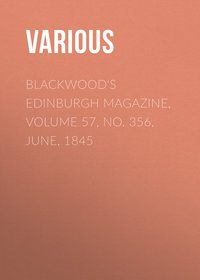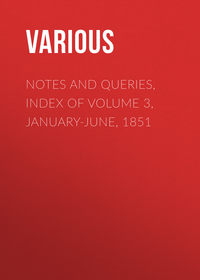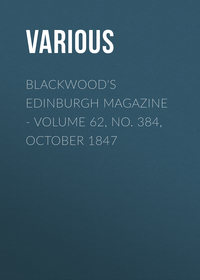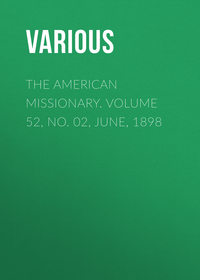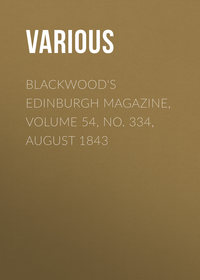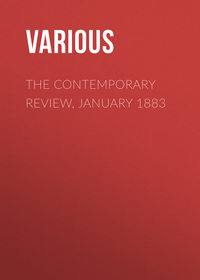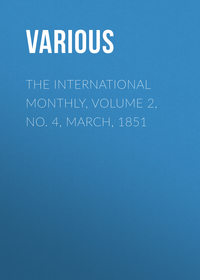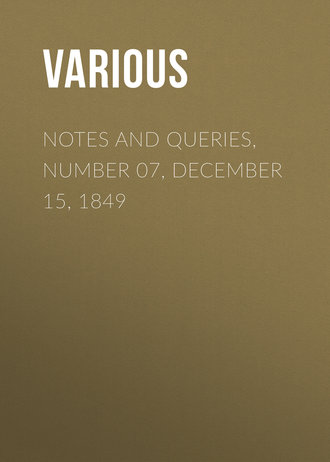 полная версия
полная версияNotes and Queries, Number 07, December 15, 1849
An exact transcript of the title of the work, and of the manuscript notes which enrich my own copy of it, may therefore be acceptable:—
"Humane industry; or, a history of most manual arts, deducing the original, progress, and improvement of them. Furnished with variety of instances and examples, shewing forth the excellency of humane wit. [Anonymous.] London, for Henry Herringman, 1661." 8º.
[On the title.] "E libris rarioribus Joannis Brand, Coll. Line. Oxon. 1777."
[On a fly-leaf.] "This book is ascribed by Wood to Dr. Tho'm. Powell, canon of St. David's, who was, says he, 'an able philosopher, a curious critic, and well versed in various languages.' See an abstract of this scarce book in Oldys's British librarian, p. 42."
"N.B.—The above is the hand-writing of the Rev'd. M'r. Granger, author of the biographical history.– I bought it of Mr. Prince, at Oxford, who purchased his books." [John Brand.]
I have now only to consign the learned Powell to future biographers, and to recommend the volume as one which deserves a place in every choice collection of English books.
BOLTON CORNEY.MINOR NOTES
Quotations from Pope.
D***N**R. (p. 38.), gives, as an instance of misquotation, a passage from Pope, as it appeared in the Times, and adds a correction of it. As my memory suggested a version different from both that of the Times, and the correction of your correspondent, I turned to Pope (Bowles edition, 1806), and found the passage there, precisely as it is given from the Times. Has your correspondent any authority for his reading? No various reading of the lines is given by Bowles.
While on the subject of Pope, I will make a note (as I have not seen it noticed by his commentators), that the well-known line,
"The proper study of mankind is man,"is literally from Charron (De la Sagesse, I. i. ch. 1.)—
"La vraye science et le vray etude de l'homme c'est l'homme."F.F.B.[We may add, that in the Aldine edition of Pope, which was produced under the editorial superintendence of the Rev. A. Dyce, the lines are given as quoted from the Times, and without any various reading. See vol. ii. p. 55.]
Angels' Visits.
Campbell's famous line,
"Like angels visits, few and far between,"has been clearly shown by a correspondent in another paper, to be all but copied from Blair:—
—– "like an ill-used ghost Not to return;—or if it did, its visits Like those of angels, short and far between."
Blair's Grave.But the same phrase, though put differently, occurs in a religious poem of Norris of Bemerton, who died in 1711:—
"But those who soonest take their flight, Are the most exquisite and strong, Like angels visits, short and bright, Mortality's too weak to bear them long."
WICCAMECUS.Extract from Parish Register of North Runcton, Norfolk.
Sir,—As a pendant to the extracts from the register of East Peckham, Kent, in your third number, I send the following, which I copied some time ago from one of the register books of the parish of North Runcton, Norfolk, and which may prove interesting to some of your readers.
C.W.G"Jun. 12. 1660.
"Reader,—Lest whatever pseudography (as there is much thereof) occurring to thy intentionall or accidentall view of the following pages in this book should prove offensive to thee, I thought good to give thee an account of what hath occasioned the same, viz. In the woful days of the late usurper, the registring of births, not baptisms, was injoyned and required, to give a liberty to all the adversaries of Pedobaptisme, &c., and, besides some circumstances, too unhandsome for the calling and person of a minister, were then allso annexed to him that was to keep a register of all, &c.; and so it came to passe, that persons of no learning, for many places, were chosen by y'e parish, and ministers declined the office.
NATH ROWLES."The Norman Crusader.
"The Norman Crusader," in the horse-armoury in the Tower of London, or a part of it, came from Green's Museum. He obtained the hauberk from Tong Castle. At the dispersion of the Museum, the hauberk was purchased by Bullock, of Liverpool (afterwards of the Egyptian Hall), in whose catalogue for 1808 it appears as a standing figure, holding a brown bill in the right hand, and resting the left upon a heater shield.
Bullock at this time added the chauses.—In 1810, the "London Museum" was opened at the "Egyptian Temple" (Hall), the figure as before; but, in the catalogue for 1813, we have the man and horse standing in front of the gallery, and named "The Norman Crusader."
At the "decline and fall" of Bullock's Museum, Mr. Gwennap purchased the Crusader for, it is said, 200 guineas; and after being put in thorough repair, it was placed in the "Aplotheca," Brook Street, Mr. Gwennap, jun. adding the sword.
During its repair, it was discovered that the armour was not originally made for a horse, but for an elephant; and, on inquiry, it appeared that Bullock had purchased it, together with other curiosities, of a sailor, had taken it to pieces, and formed the armour for the horse.
At the sale of Gwennap's collection, "The Norman Crusader" was knocked down by Geo. Robins to a Mr. Bentley, for 30l., and he being unable to polish it, as he had intended, sold it to the authorities at the Tower for one hundred guineas, where it is exhibited as "The Norman Crusader."
NASO.Lady Jane of Westmoreland.
Sir,—On page 206. of Mr. Collier's second volume of Extracts from the Registers of the Stationers' Company, the following entry occurs:– "1585-6. Cold and uncoth blowes, of the lady Jane of Westmorland." And on page 211., "A songe of Lady Jane of Westmorland." Mr. Collier considers these entries to refer to the same production.
The name of Lady Jane of Westmoreland does not occur in Park's edition of Royal and Noble Authors; but it would clearly be entitled to a place there, if we can ascertain who she was.
I have little doubt she was Jane, daughter of Thomas Manvers, first Earl of Rutland, and first wife of Henry Nevill, fifth Earl of Westmoreland, by whom she was mother of Charles, Earl of Westmoreland, one of the chiefs of the northern rebellion.
Collins, under the title "Rutland," states that Anne, daughter of Thomas, first Earl of Rutland, married Henry, Earl of Westmoreland; but under the title "Abergavenny" he states that the same Henry, Earl of Westmoreland, married Jane, daughter of Thomas, first Earl of Rutland. The last statement I presume to be the correct one.
I can find no other person, at the period in question, to whom the title of Lady Jane of Westmoreland could have been attributed; and her sister Frances, who also married a Henry Nevill (fourth Lord Abergavenny of that name), is known to have been an authoress. An account of her will be found in the first volume of the Royal and Noble Authors, by Park. Lady Frances Abergavenny (whose work is entered on page 52. of Mr. Collier's second volume), had an only daughter, who married Sir Thomas Fane, and from this marriage the present Earl of Westmoreland is descended.
Q.D.NOTES IN ANSWER TO QUERIES
The Lobster in the Medal of the Pretender.
Your correspondent, Mr. B. NIGHTINGALE, desires an answer to his Query (in your No. 4), Why is the figure of a Lobster introduced into the impression upon the rare medal struck 20th June, 1688, in contempt or ridicule of Prince James Edward, the newly-born son of King James II.?
A reference to the two following works will, perhaps, supply the answer:—
1st. In Philemon Holland's translation of Pliny's Natural History (a great authority at the time) this passage occurs in book ix. cap. 30.:—
"Lobsters, so long as they are secure of any fear and danger, go directly straight, letting down their hornes at length along their sides;… but if they be in any fear, up go their hornes straight—and then they creep byas and go sidelong."
And in the next chapter (31.):—
"Crabs" (which were often confounded with lobsters) "when they will be afraid, will recule backward, as fast as they went forward."
2nd. In the celebrated work of Sebastian Brandt, entitled Stultifera Naxis (which went through many editions after its first appearance in 1494), is an engraving of a fool, wearing cap and bells, seated astride on the back of a lobster, with a broken reed in his hand, and a pigeon flying past him as he stares vacantly at it with open mouth. The following lines are attached:—
DE PREDESTINATIONE"Qui pretium poseit quod non meruisse videtur,Atque super fragilem ponit sua brachia cannamIllius in dorso Cancrorum semita stabit;Devolet inque suum rictum satis assa Columba."It appears, then, to me, that the design of the medallist was to hold up to the exceration of the English people the machinations of Father Petre, who (together with Sunderland) guided the councils of the king at the juncture. The Jesuits, like the crustaceous fish above-mentioned, were alleged to accomplish their dark and crooked designs by creeping and sedulously working their way straight forward through the mud, until some real danger presented itself, and then reculing with equal adroitness.
At this time, too, the bigoted and superstitious adherents of James had been offering their vows at every shrine, and even making pilgrimages, to induce Heaven to grant a male heir to the throne, and thus exclude the Protestant daughters of the king. The premature and unexpected event, therefore, of the birth of a son, was pronounced by James's friends to have been predestined by the special grace of the Most High. All this, I apprehend, was intended to be typified by the figure of the Jesuit Petre riding upon a Lobster.
JOS. BROOKS YATESStraw Necklaces—Method of keeping Notes, &c.
Sir,—As I see this matter is not yet explained, I venture a suggestion. Wheat straw was an emblem of peace among heathen nations; in it the first-fruits brought by Abaris the Hyperborean to Delos were wrapped; and when commerce, or rather trade by barter, had rendered transmission from hand to hand practicable, wheat straw was still used. With the worship of Diana the offering of wheat straw passed over to Thrace, where it was a recognition of that goddess as the patron of chastity. In Judea the wheat harvest was later than that of barley, the Jews therefore offered a sheaf of the latter grain as first-fruits; it is, however, extraordinary that Moses orders barley-meal as the offering for jealousy (Numbers, v 15.), though the price of barley was but half that of wheat. It seems as if there were the same connection between this peace-offering and that of the first-fruits with the Jews, that we see between the offering to Diana and the first-fruits of the Hyperboreans; both may have been derived from Egypt, in the learning of which, we are told, Moses was skilled. The straw necklace or chaplet of Erasmus' pilgrim might be worn to secure him from molestation in travelling, or it may refer to the patroness of Walsingham, the Virgin Mary.
I dare say many persons have thought with me, that a poet's promise of a "belt of straw" to his love, was not a very complimentary one; one possible meaning never struck me till this moment: it may be a compliment unconsciously drawn from a heathen source, and perpetuated, like so many of our old-world customs, among a class of people the least likely to understand the meaning.
Another corroboration of Macaulay's Young Levite may be found in The Tatler, No. 255, sixty years later than Burton.
I beg to suggest a method of keeping "Notes," which I have found useful. I have a blank book for each quarter of the world, paged alphabetically; I enter my notes and queries according to the subject for which they are most likely to be required; if relating to mere geography or history, under the name of place or person. I also keep a list (with dates) of all the books I read, with a note of any use to be made of them; I also keep a list of all books to be read, and the reasons for reading them. I tried various ways of keeping my notes, and found no classification so easy for reference as the plan I have mentioned; it may not, however, suffice to those whose reading is much more extensive than mine; I mention it as a working plan.
F.C.B.ANSWERS TO MINOR QUERIES
Ancient Motto
Sir,—In your Sixth Number, p. 93, J.E.M. wishes to know whence the motto, "Si quis amicum absentum rodere delectat," &c. is taken.
Allow me to refer your correspondent to Horace, Sat. I. iv. 81 sqq.
"Absentem qui rodit amicum,Qui non defendit, alio culpante,* * * * * * * *hic niger est, hanc tu, Romane, caveto."The inscription would seem to be but an adaptation of Horace's maxim.
C.B.B.Political Maxim—when first used.
The political maxim, or phrase, inquired after by C. is Burke's. It occurs in his celebrated Thoughts on the Cause of the present Discontent, published in 1770, in the course of his defence of party, a few pages from the end. A short extract will show the connection in which it is introduced:—
"No man, who is not inflamed by vain-glory into enthusiasm, can flatter himself that his single, unsupported, desultory, unsystematic endeavours are of power to defeat the subtle designs and united cabals of ambitious citizens. When bad men combine, the good must associate; else they will fall, one by one, an unpitied sacrifice, in a contemptible struggle."
I have some suspicion that the maxim may be found, with probably a slight variation of expression, repeated in one of Burke's later tracts. But this is certainly its first appearance.
G.L.C.Old Brompton, Dec. 8. 1849.
Annus Trabeationis.
Sir Harris Nicholas, in his Chronology of History, p. 4., gives "annus Trabeationis" as one way in which the year of our Lord is designated in ancient documents. Would any of your readers favour me with the meaning of the word Trabeatio?
G.P.[Our correspondent will find, on referring to Mr. Hampson's useful work, Medii Ævi Kalendarium, vol. ii. s. v. Annus Trabentionis, "According to Du Cange, this is the year of the crucifixion—'Annus Trabeationis Christi (annus quo Christus trabi affixus est);' but according to L'Art de vérifier les Dates, it is the same as the year of the Incarnation." Mr. Hampson adds, "the import of the word is the year of the Crucifixion, and cannot well be reconciled with that of the Incarnation." But, upon referring to Du Cange, s. v. Trabeatio, our correspondent will find that Du Cange regards it as the year of the Incarnation—"Trabeatio autem, non a trabe, quà Crux intelligi posset, sed a trabea togæ species, deducitur"—quoting, as his authority for this interpretation, a sermon of St. Fulgentius on St. Stephen, in which he says, "Heri enim Rex noster Trabea carnis indutus."]
Betterton's Duties of a Player.
Sir,—Betterton's Instructions on the Art of Playing and Public Speaking, queried in your 5th Number, were pubished by the well-known dramatic critic, Charles Gildon, and form a portion of his Life of Betterton. As this work is little known, I shall quote the title at length:—"The Life of Mr. Thomas Betterton, the late eminent Tragedian, wherein the Action and Utterance of the Stage, Bar, and Pulpit, are distinctly considered; with the judgment of the late ingenious Monsieur de St. Evremond, upon the Italian and French Music and Operas, in a Letter to the Duke of Buckingham. To which is added, The Amorous Widow, or the Wanton Wife, a Comedy, written by Mr. Betterton, now first printed from the Original Copy. London, Printed for Robert Gosling, at the Miter, near the Inner Temple Gate in Fleet Street, 1710. 8vo." Gildon was intimately acquainted with Betterton, and he gives an interesting account of a visit paid to that great actor, the year before his death, at his country house at Reading. It was on this occasion that Gildon came into the possession of Betterton's manuscripts. Thirty-one years after the publication of Betterton's Life, Curll, the notorious bookseller, put forth a mutilated copy of the Instructions on Playing, in a work bearing the following title:—"The History of the English Stage, from the Restauration to the Present Time, Including the Lives, Character, and Amours, of the most Eminent Actors and Acresses; with Instructions for Public Speaking, wherein the Action and Utterance of the Bar, Stage, and Pulpit, are distinctly considered. By Thomas Betterton. London, Printed for E. Curll, at Pope's Head in Rose-Street, Covent Garden, 1741. 8vo." From this title it would appear (as indeed Curll wished it) that Betterton was the author of the entire work; but he is only accountable for the brief Instructions for Public Speaking, which, as before stated, were pillaged from Gildon.
Reverting to Colley Cibber's Lives, I beg to point out a curious and rare tract in connection with them, entitled, "A Brief Supplement to Colley Cibber, Esq.; his Lives of the Late Famous Actors and Actresses. By Anthony (vulgò Tony) Aston. Printed for the Author. 8vo. pp. 24." The copy now before me, which was Isaac Reed's, sold at his sale for 2l. 5s. It is reprinted in a literary journal called The Cabinet, and in Bell-chambers' excellent edition of Cibber's Apology.
Whilst on the subject of the stage, I should be glad if any of your correspondents could inform me what has become of "Dick Leveridge's History of the Stage and Actors in his own Time?" Leveridge himself informed Oldys that he had compiled such a work, and Oldys, with his usual care, noted the fact in one of his numerous memorandum books. I have been long engaged in a history of The Life and Times of Henry Purcell, and the said MS., if it could be recovered, would, without doubt, enlighten us much upon the subject of Purcell's career as a dramatic composer.
EDWARD F. RIMBAULT.Betterton's Essay.
The "best piece" of Betterton, for which T. J. L. inquires (p. 68.), is contained in his Life, printed by Gosling, 1710; in fact, this is merely a vehicle to intriduce the treatise, the Life filling only from p. 5. to 11., and thus concluding:—"He was bury'd with great decency in Westminster Abbey."
"The year before his death, (he) being at his country house in Reading, my friend and I travelled that way.... One day, after dinner, we retired to his garden, and fell into the discourse of acting." Thus is introduced his Essay, &c., continuing to p. 174., where it abruptly ends thus:—"After this discourse, we took our leaves of Mr. Betterton, and returned to London. I was pleased with his story," &c.
My copy is dedicated to Richard Steele, Esq., by Charles Gildon, and has prefixed to it the beautiful portrait of Betterton, engraved by Vander Gucht, from Kneller's picture, and, at its close (but separately paged), "The Amorous Widow or the Wanton Wife, now first printed from the original copy," 1710. E.
Incumbents of Church Livings.
A correspondent in Number 4., writes to inquire for information relative to the "names and birthplaces of incumbents of church livings prior to 1680, and the patrons of them."
It may slightly help his investigations to know that there is a Latin MS. in the British Museum, numbered Additional MSS. 12,483, with the title "Ecclesiastical Visitation of Hampshire and the Isle of Wight, held in March and April 1543, by Nicholas Harpisfelde, Official of the Archdeacon of Winchester," folio, containing the names of the incumbents and churchwardens of the livings in those counties.
W. M. KINGSMILL.Westminster, December 1849.
Mars de Saham—Portum Pusillum.
The first appears to be Soham, in Cambridgeshire; described in Liber Eliensis as "terra de Saham, quæ est ad stagnum juxta Ely." Does "mare" stand for "stagnum," "palus," "mariscus," or our English "mere?" Can Portum Pusillum be Littleport, in the same country?
J.F.M.Reinerius—Inquisition in France.
Sir,—Faber, in his work on the Waldenses, quotes Reinerius, in Biblio. Patrum. I have in vain looked in modern biographical dictionaries for any account of Reinerius, so am constrained to inquire of some of your readers, who and what he was, or to beg the favour of a reference to some accessible account of him. I think Faber says he was an inquisitor; and this is the extent of the information which I have been able to collect respecting him.
I wish also to inquire whether his work on Heretics (his only work, I presume) has been published in any other and more accessible form than that in which it was referred to by Faber; and, particularly, whether it has ever been translated into English.
I have often wished to know whether the tribunal of the Inquisition was ever established elsewhere in France than at Toulouse. Can any of your correspondents enlighten me on the point, and give me references in proof?
D.[The work of Reinerius Saccho was first published by the Jesuit Gretser in 1613, and has since been reprinted in the different editions of the Bibliotheca Patrum. It has never been translated into English.]
Whelps.
The following extracts from the Travels of Sir William Brereton may answer the inquiry respecting the ships called "Whelps":—
"Waterford, 25 July, 1635. About six hour I went aboard one of the kings ships, called the ninth whelp, which is in the king's books 215 ton and tonnage in kings books. She carries sixteen pieces of ordinance, two brass rakers, six iron demiculverin drakes, four iron whole culverin drakes, and four iron demicannon drakes. They are called drakes. They are taper-bored in the camber, and are tempered with extraordinary metal to carry that shot; these are narrower where the powder is put in, and wider where the shot is put in, and with this kind of ordinance his majesty is much affected. This ship is manned with sixty men."—p. 164.
"1627. This 26th of February, attending the officers of the navy at Sir Sackville Crowes house by Charing Cross, Sir John Pennington came thither to acquaint them with a warrant from the Lord Duke (of Buckingham) directed to him and myself, for present bargaining with the yard keepers of the river for the building of ten small vessels, for the enterprise of Rochel, of some 120 tons a piece, with one deck and quarter only, to row as well as sail. The 28th of the same month we concluded our bargains with the general yard keepers, and drew convenants between us, and delivered to them accordingly. In this business I was employed till the latter end of July that the ships set sail to Portsmouth. My son John was placed captain in the sixth whelp, built by my kinsman Peter Pett. Having liberty from my lord Duke to make choice from among them all, I chose that pinnace before the rest, supposing she would have proved the best, which fell out afterwards cleane contrary. The 4th September my son John took leave of me in the evening, and went on board his ship, whom I never saw after, being unfortunately cast away in the return from Rochel.
"1628. In this interim I received certain intelligence of the great loss of my son John, his ship and all his company, who foundered in the sea about the Seames in a great storm, about the beginning of November; not one man saved to bring the doleful news, nor no ship near them to deliver the certainty but a small pinnace belonging to the fleet that was within ken of her, and saw her shoot nine pieces of ordinance hoping of succour."—Journal of Phineas Pett. MSS. in Brit. Mus. 9298.
"At the return of this fleet (from Rochel) two of the whelps were cast away, and three ships more, and some five ships who had some of those great stones, that were brought to build Pauls, for ballast and for other uses within them, which could promise no good success, for I never heard of any thing that prospered which being once designed for the honour of God was alienated from that use."—Howel's Letters, sect. v. lett. 9.
The name whelp was probably given them facetiously in reference to their designation as barks.




